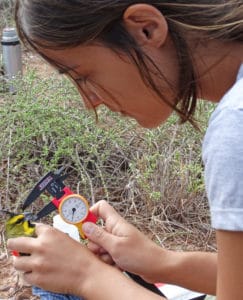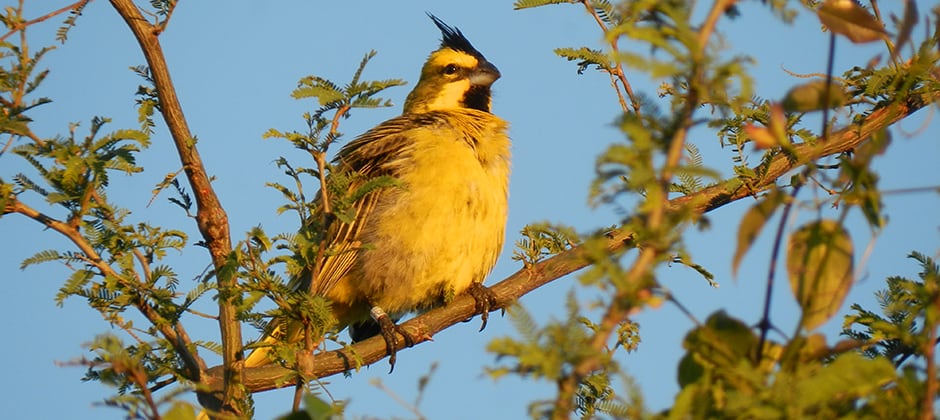Share this article
JWM: Returning captive yellow cardinals to the wild
Twenty-six yellow cardinals in Argentina had come a long way on their path to liberation. Most of the endangered birds were confiscated from poachers or pet owners from various parts of the country, and until recently, researchers wouldn’t have known where to release them. But genetic testing gave biologists pretty good clues about where the captive birds originated, and they wanted to see how they would fare if rereleased.
“It’s difficult to find the real story of each bird because it’s a dark history,” said Marisol Domínguez, a researcher with the University of Buenos Aires and the lead author of the study published recently in the Journal of Wildlife Management.
Yellow cardinals (Gubernatrix cristata) are found in Argentina, Brazil and Uruguay, and are considered endangered by the International Union for Conservation of Nature due to loss of habitat from farming, ranching, logging and, particularly, because of poaching. Poachers sell the birds in the pet trade in South America and as far as Europe. The IUCN estimates only a couple of thousand are left in the wild, and Domínguez said that the populations in Argentina are the highest, although “right now the numbers are low everywhere.”
The birds’ bright colors and black crests have made them popular in the pet trade, including in Argentina, where they’re commonly found in homes, even though possessing them is illegal. The males also have elaborate mating calls. “The reproductive song of the cardinals is beautiful,” said Domínguez, who is now doing postdoctoral research at the Normal Superior School in Paris.
While some yellow cardinals in the pet trade are raised in captivity, she said, poachers often capture them in the wild by playing mating calls from a speaker or a live male in a cage trap to attract other territorial males, sometimes using a device called a pega-pega (roughly meaning “stick-stick”) that snags the birds in glue. In the past, when Argentine authorities confiscated the birds they found, they often were unsure about what to do with them, Domínguez said, leading to some birds to die in custody.

Researchers tagged and banded yellow cardinals before releasing them to the wild. Courtesy of Marisol Domínguez
In a previous study, her team first took genetic samples from dozens of birds to understand their genetic differentiation. They found three distinct populations — one management unit several kilometers north of the city of Buenos Aires and two in central Argentina west of the city of Buenos Aires.
For the recent study, they analyzed DNA from 109 confiscated cardinals and found that all except for one belonged to one of the western populations. Once they knew where birds belonged, they organized a release of 26 relatively healthy confiscated birds onto private land where they would be relatively protected. They equipped 12 males with radio transmitters, put color bands on the rest of them and came back in mid-November to collect the radio transmitters.
The birds’ taste of freedom produced mixed results. Of the males with tracking devices, five were predated, possibly by eagles or other raptors, and one was found dead without signs of predation. Two birds were never found again. The remaining four survived until the devices were retrieved.
“It’s not much, but it’s better than nothing,” Domínguez said.
Three of the survivors paired with females — two with a wild female and one with a female that had been released but not radio-tagged. Two of those pairs even built nests.
“We were happy to see that some of these males did succeed to attract a female and had some eggs,” Domínguez said, adding that some eggs even hatched.
Domínguez said researchers are planning future releases and would like to conduct longer tracking studies of released birds. More resources could also be invested in training the birds to avoid predators prior to release, or to conduct a longer soft release, she said.
This article features research that was published in a TWS peer-reviewed journal. Individual online access to all TWS journal articles is a benefit of membership. Join TWS now to read the latest in wildlife research.
Header Image: Yellow cardinals are endangered in part due to poaching for the pet trade. ©Carlos Figuerero








